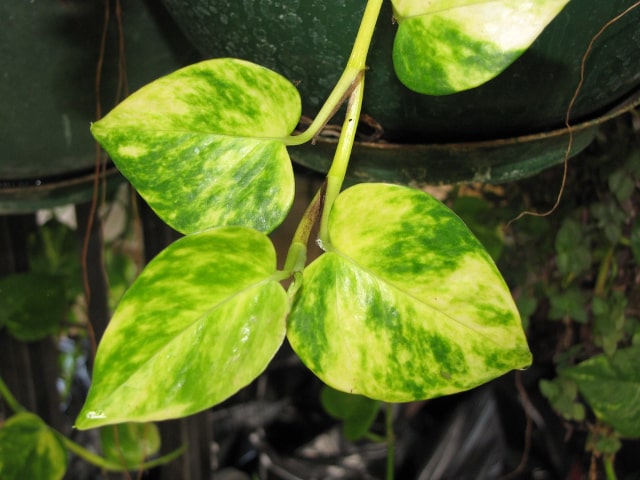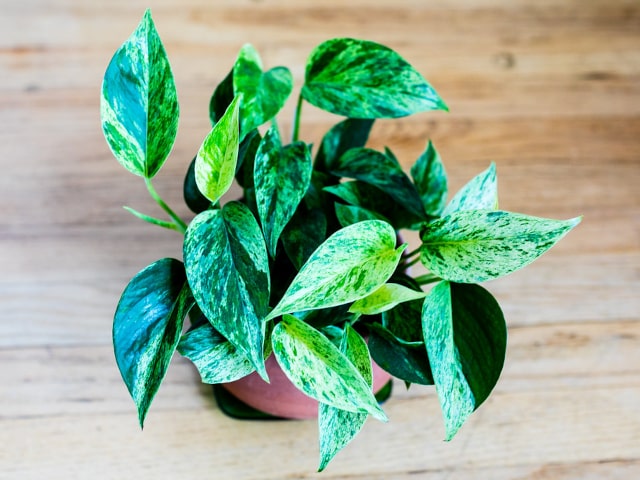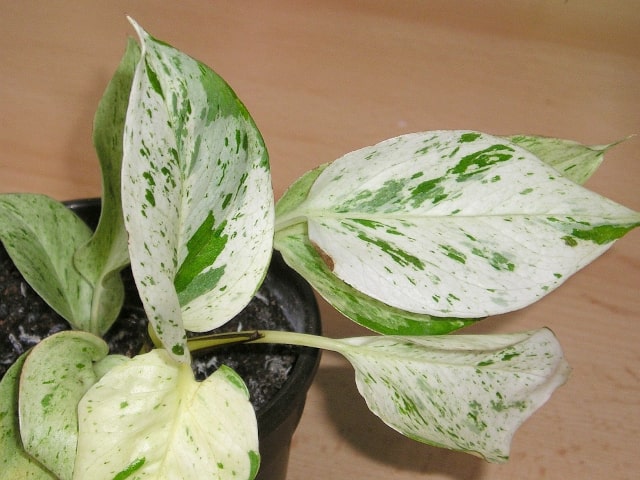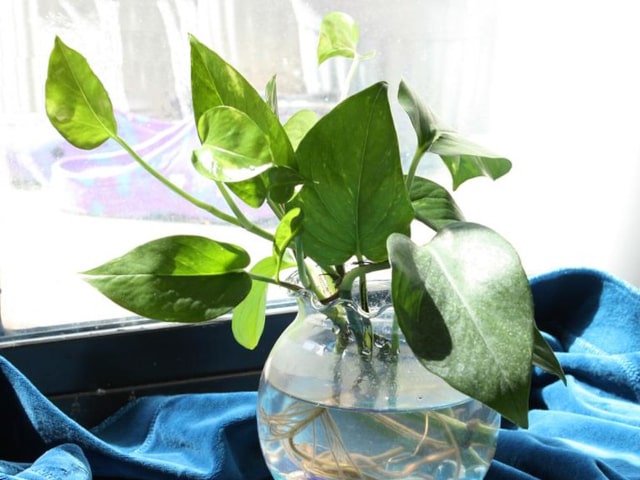
Pothos is an extremely popular house plants in the United States. It is very beautiful and striking, which is why many people choose to grow it in their homes and offices. A great thing about Pothos is that while it isn't the easiest plant to grow, it does not require a lot of care and it is hard enough that it typically does not have many diseases and other issues.
However, from time to time you may notice some issues with your Pothos. Pothos plant leaves turning yellow is one of the most common problems that you may encounter with this plant. Luckily, it is not difficult to solve this issue, but you need to observe your plants regularly to notice problem as soon as it starts.
Pothos Leaves Turning Yellow
The first thing you need to understand about Pothos plants is that some varieties do have naturally yellow leaves. If you have bought a new Pothos plant or if you received one as a gift, and the leaves are yellow, keep in mind that there might not be anything wrong with it. It might just be a variety that has naturally yellow leaves. For example, Golden Pothos is one of those. It is very popular and you will recognize it for its green and yellow variegated leaves.
Keep in mind that for all types of Pothos plant, it is typical for leaves that are older to turn yellow before they drop off. This is completely normal and generally harmless. Healthy leaves will remain on the vine, so your plant should remain strong and healthy. When this happens, don't panic: you can cut plant back 2 inches from the soil line if dropping leaves is excessive. This should promote health in your plant and will encourage new growth.
However, it is important to remember that Pothos' leaves can turn yellow because of a disease or many other issues. The good thing is that this is typically a problem that can be rectified in most of the cases, but you need to notice the issue as soon as it appears.
The Most Common Problems
There are many reasons why your photos leaves might be turning yellow. Here are the most common issues you may encounter with your plant:
Root Rot on Your Plant
This is probably the most common cause of the yellow leaves on your Pothos plant. When the roots are rotting, they will turn mushy and black. However, you may not be able to see this easily. What is more apparent is that the leaves on your Pothos plant will turn yellow, and in many cases, they will also fall down.
The problem of the root rot is often caused by soil that is too saturated. This is typically a result of too much watering. It is therefore important never to overwater your Pothos. However, kep in mind that root rot disease can also be caused by heavy soil or inadequate drainage, so you need to keep that in mind and check for these issues to identify the problem.
If your Pothos plant has yellow leaves, there may be many things you can do to help it. However, it is always important to identify the problem first. For example, if the cause is the root rot, you need to treat both roots and the leaves. Simply cut yellowing leaves with sanitized scissors or a knife. Also, make sure to dig up the plant to cut off all of the affected roots. You may also wish to clean the container and wash roots with clean water. Cut the affected roots and report your Pothos in fresh soil. Place the container on the spot that has sun with partial shade. Also, make sure that the soil is well-draining: never over-water your pot to prevent further issues with root rot.
Manganese Toxicity
This is a very common problem for Pothos plants that experience yellow leaves. This particularly problem of older Pothos plants. It happens when too much manganese accumulates in the soil. It can make your Pothos look weak and unhealthy. The leaves will turn yellow and they may drop. Many times, this is a problem directly caused by strong commercial fertilizers.
To prevent manganese toxicity in your Pothos plants, make sure to choose any fertilizer carefully. Pay close attention to the manganese content. Alternatively, you may also try to add some lime to the soil. This can amend the soil to remove excess manganese content and improve the condition of you Pothos plants.
Bacterial Wilt Disease and Southern Blight
Bacterial wilt disease typically happens when new, infected cuttings will not root as they should. If the wilt occurs, you will notice this by stems and leaves on the plant. They may darken or turn yellow. The bacteria can destroy the entire plant and ruin propagation of a Pothus. To prevent this, it is important to keep a close eye on your Pothus plant.
Southern blight typically happens in the warm Southern climates, hence the name. It is caused by fungus Sclerotium rolfsii. This fungus causes the plant cells to waste away.
Both Southern Blight and Bacterial Wilt Disease can progress really quickly. These particularly happen during too hot months. It is therefore important to act quickly to get rid of these diseases before they get out of line.
To treat bacterial or fungus infection you should cut a deceased parts of the plant near the soil level. Cut them in the water and let the milky substance run out of the affected cutting. Make sure to observe your Pothos and other plants in the vicinity to notice any signs of the disease. It is important to always disinfect your tools and all the surfaces. Keep in mind that you may need to be forced to discard all of the affected plants if these diseases attack. This is important so the infection cannot spread further.
Bacterial and fungal infections prevention is always the best course of action. Make sure to keep any potting mix away from the ground where bacteria and fungi may be. Never mix flowers, foliage, or vegetable plants with Pothos plant to minimize the chance of cross-contamination. Also, always make sure to observe your plants carefully to notice any problem as soon as it starts to develop.
Photo credit: Forest and Kim Starr



0 Comments